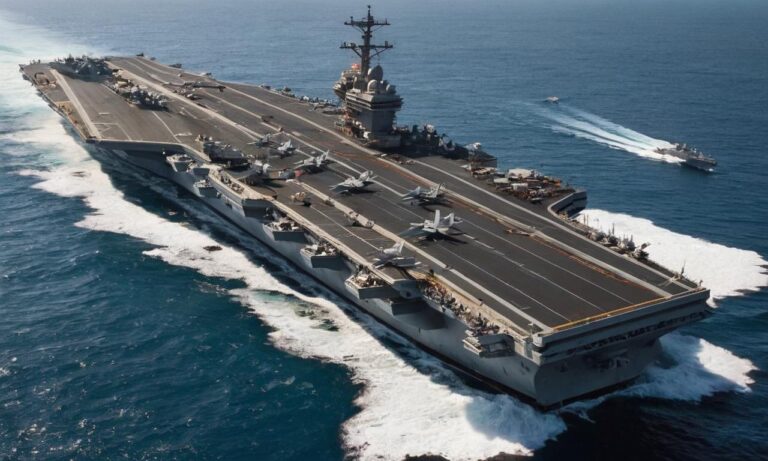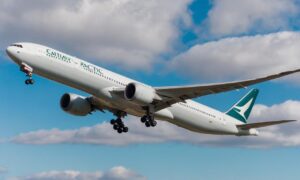Have you ever wondered about the immense weight that an aircraft carrier carries? The answer lies in the intricate design, construction, and purpose of these colossal naval vessels.
The Weighty World of Aircraft Carriers
Aircraft carriers are the epitome of naval power, serving as floating airbases on the high seas. Their weight is a critical factor in their functionality and overall capabilities. To comprehend the enormity, we need to delve into the various components that contribute to the mass of these maritime giants.
Hull and Structure
At the core of an aircraft carrier’s weight is its hull. Typically constructed from high-strength steel or other advanced materials, the hull must withstand the tremendous forces encountered during oceanic operations. The sheer size and thickness of the hull significantly contribute to the carrier’s overall weight.
Flight Deck and Superstructure
The expansive flight deck is another substantial contributor to the weight of an aircraft carrier. Designed to accommodate numerous aircraft simultaneously, the deck requires robust engineering to support the landing and takeoff of various aircraft types. The superstructure, housing control towers and other essential facilities, further adds to the carrier’s weight.
Aircraft and Armaments
Of course, an aircraft carrier’s purpose is to carry and deploy aircraft. The weight of these aircraft, along with the necessary fuel and weaponry, contributes significantly to the overall mass. The carrier’s ability to project air power is directly tied to its capacity to carry a diverse range of aircraft, each with its own weight considerations.
Classifying Carriers by Weight
There are several classes of aircraft carriers, each varying in size and weight. The weight of an aircraft carrier is often categorized by its displacement, which refers to the weight of the water it displaces. The displacement of modern carriers can exceed 100,000 tons, underscoring the sheer magnitude of these maritime behemoths.
Nuclear vs. Conventional
Furthermore, the propulsion system plays a role in determining the weight of an aircraft carrier. Nuclear-powered carriers, such as those in the United States Navy, tend to be heavier due to the added weight of nuclear reactors. In contrast, conventionally powered carriers rely on fuel and tend to be slightly lighter.
In conclusion, the weight of an aircraft carrier is a multifaceted aspect that encompasses the vessel’s structure, flight deck, aircraft, armaments, and propulsion system. Understanding this weight is crucial for naval strategists, engineers, and enthusiasts alike. As these floating fortresses continue to evolve, so too will their weight, reflecting advancements in technology and the ever-changing landscape of naval warfare.
Evolution of Carrier Design
The evolution of aircraft carrier design has been a continuous process, driven by advancements in materials, technology, and strategic considerations. Over the years, naval engineers have sought to optimize the weight distribution and overall structure of carriers to enhance their performance and versatility on the open seas.
Advanced Materials and Weight Reduction
Modern aircraft carriers leverage cutting-edge materials to reduce weight without compromising structural integrity. The use of composite materials, advanced alloys, and lightweight components allows carriers to maintain strength while shedding excess pounds. This emphasis on weight reduction contributes to increased speed, agility, and operational efficiency.
Electromagnetic Aircraft Launch Systems (EMALS)
One notable technological advancement affecting carrier weight is the adoption of Electromagnetic Aircraft Launch Systems (EMALS). Traditional steam catapults, used for launching aircraft, are heavy and require substantial infrastructure. EMALS, being more compact and efficient, not only reduce carrier weight but also provide more precise control over aircraft launches, improving overall aviation capabilities.
Frequently Asked Questions
| Question | Answer |
|---|---|
| 1. How much do aircraft carriers weigh? | The weight of aircraft carriers varies, but modern carriers can exceed 100,000 tons, considering their displacement. |
| 2. What role does the propulsion system play in carrier weight? | The propulsion system, especially in nuclear-powered carriers, contributes to additional weight due to the presence of nuclear reactors. |
| 3. How do carriers evolve to accommodate changing technologies? | Carriers evolve through the integration of advanced materials, technologies like EMALS, and ongoing design enhancements to optimize weight distribution and performance. |
Global Perspectives on Carrier Weight
Different countries approach aircraft carrier design with varying philosophies and priorities, leading to diverse perspectives on carrier weight. Some nations prioritize sheer size and capabilities, while others focus on agility and cost-effectiveness. Understanding these global perspectives provides insights into the geopolitical dynamics of naval power.






